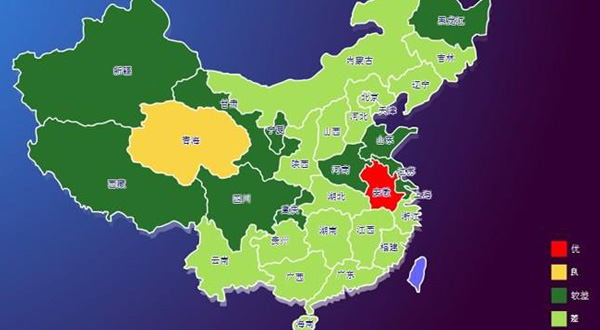Classification of the nervous system. Somatic and autonomic nervous system
Nervous system – most important of all the systems in the body, because it is involved in coordinating the activities of all the bodies forming the person's mood, regulating his health. Without the nervous system there can be neither emotional nor mental, nor physical activities.
Schema nervous system
Given the global role of the nervous system in the body, it is important to understand that the structure and activities of it can be classified. For common development and a better understanding of the work of your body it is important to know which parts of the system exist, and what functions they perform.
In order to get the General to imagine how is the diagram of the nervous system, it is necessary to study the picture. You can then proceed to the consideration of each item of the classification in more detail.

Organs of the nervous system
Classification of the nervous system - is, first and foremost, her physical structure. It consists of:
- Brain;
- Spinal cord
- Nerve;
- Ganglia and nerve endings.
The brain – the most important organ that deals with the regulation of activities of all bodies, and which are formed stimuli (commands) sent to the cells of internal organs and muscles.

The brain consists of several departments, each of which is “responsible” for a specific function.
Brain | Basic functions |
The medulla oblongata and the bridge. | Decision-Making about the launch of the reactions that govern the most important life functions: breathing, heart and blood vessels, digestion, and wakefulness. |
The Cerebellum | Automation of movements: balance, movement in space, arbitrary movements (e.g., writing). |
Midbrain | Response to stimuli, attention to what is happening. |
Diencephalon | Regulation of the endocrine system, “filtering” signals in the brain. |
Cerebral Cortex | The sense of Smell, short term memory, speech, thinking process, will and initiative. |
The brain actively communicates with the spinal cord, which is located on the entire length of the spine, consisting of 31 fragment – vertebra. The spine consists of four sections, each of which manages a specific “floor” of the body:
Recommended
A tablet from worms – the relevance of the application for the person
How relevant today, drugs against worms in humans? What kind of creatures these worms, what are modern methods of treatment? We will try to answer these questions, since ignorance in this area is undesirable. Imagine a mummy, which is misleading in k...
What to do if you cracked skin on hands?
Each of us at least once in a lifetime encounter with a small, but very, when the crack the skin on the hands. At this time there are wounds of different sizes, which hurt and cause inconvenience, especially when in contact with water or detergents. ...
Spray Macho man - the key to a proper relationship between the two spouses
Male impotence is a pathological condition associated with abnormal physiological capacity of the penis to reginout and bring sexual partner pleasure in bed.sex impotenceimpotence may not men to pass unnoticed – it usually spoils his nervous sy...
- Neck: the neck, hands and diaphragm;
- Chest: the organs of peritoneal and chest;
- Lumbar: legs;
- Sacrococcygeal: basin.
Thus, the signal of the nervous system from the brain enters the corresponding spinal cord and from there-to the desired organs, cells, tissues. And the path from the spinal cord to specific nerve endings lying on the nerves, and, to be exact – aksonam neurons in the form of short electric pulses.
CNS and PNS
Knowing what is diagram of the nervous system, it is possible to consider its primary division: Central and peripheral. The first bodies are the brain and spinal cord. To the peripheral nervous system includes motor and sensory nerves.

The Activity of both systems are closely interrelated, they cannot exist independently. However, they have certain differences.
Central nervous system
The Central nervous system is the main part of the nervous system of people. She is responsible for the formation and implementation of the reflexes, both simple and complex. The ability of these processes to save energy within the body. This has made a significant contribution to the development of the nervous system. From an evolutionary point of view on the person, it adapts to external factors, making vital processes easier and faster.

The Structure of the Central nervous system – the brain and spinal cord. Both on this system is protected from damage: the brain is inside the skull, spinal cord – inside the spine. The brain also protected the blood-brain barrier, which protects the body from exposure to chemicals. In that case, if any of the bodies Central nervous system will be damaged, quality of life and health, at least - to deteriorate, and in some cases may be fatal.
Peripheral nervous system
To ensure the relationship of the Central nervous system and organs exists in the peripheral part of the nervous system.
In the peripheral nervous system includes the nerve endings, neurons, nerves. The main function of the PNS – the management and control of the skeletal muscles, regulation of all organs and maintaining homeostasis. That is, after the brain sends a signal to the spinal cord corresponding to its plot sends synaptic signals through the axons of nerve cells to the desired organ. It can be as stimulating signal (e.g., contraction of a muscle) and relaxing.

The NTC provides two-way communication between man and his environment: he can not only receive signals but also to react to them with movements, facial expressions.
Somatic nervous system
Somatic nervous system deals with conscious control of the body, unlike vegetatie controlled by the person directly not. The somatic division is sometimes called animals, because the activity of this system in animals and humans differ slightly.
Somatic nervous system consists of the following organs:
- The muscles;
- Skin;
- Throat;
- Throat;
- Language.
With the help of these tissues and organs a person has the ability to control your body and feel the tactile touch. The possibility of conscious control is that people can independently decide to go to him, to squat or not to move, but to decide which heart rate or blood pressure at this point should he be, man can not. Since these tasks fall within the competence of the autonomic system.
Vegetation
Classification of nervous systems of people according to their structure – not the only way to split its departments. The colossal importance of the autonomic nervous system, responsible for direct management of the organs of all systems. People cannot consciously control the activity of vegetatie, but information about how it works, it helps sometimes to adjust the feeling when vegetative disorders, for example, in advanced disease – VVD (vegetative vascular dystonia).

The Activity of the autonomic nervous system is carried out by two departments-antagonists: sympathetic and parasympathetic. That is, when aktiviziruyutsya the sympathetic division, the parasympathetic activity is automatically terminated.
Sympathetic division
Sympathetic division of the autonomic nervous system is responsible for its activity. It triggers bodily reactions that are conventionally referred to as “fight or flight”. That is, simpatika runs in response to a situation in which activity.
Physically it is manifested in the following ways:
- Increased muscle tone;
- Increased heart rate;
- Dilated pupils;
- Increase in blood pressure.
During operation of the sympathetic division of vegetatie accumulated by the body energy actively spent. In order to restore energy reserves, it is important that the activities of the sympathetic and parasympathetic alternated.
Parasympathetic division
The Opposite of the sympathetic division of the autonomic nervous system-parasympathetic division. It is believed that he is responsible for the relaxation of the body, as when it is activated it slows, pupils dilate, breathing becomes deeper and slower.
But, in fact, one system starts to work only after parasimpatic aktiviziruyutsya. And this system-the digestive tract.

In addition, this classification of nervous systems by Department vegetatie suggests that parasimpatic is responsible for storage of energy.
It is Important to understand that the division of the nervous system by functions and departments is conditional, because the activity of this important system is complex, and all described categories are closely interrelated. For example, it is known that the mental state has a direct impact on the physiological state. There are diseases, called psychosomatic, which arise exclusively under the influence of psychogenic factors (stress, worries, phobias). Also a threat of physical illness, such as heart attack, stroke and, according to some, cancer can occur under the influence of emotional stress.
Article in other languages:

Alin Trodden - author of the article, editor
"Hi, I'm Alin Trodden. I write texts, read books, and look for impressions. And I'm not bad at telling you about it. I am always happy to participate in interesting projects."
Related News
This diagnosis is accompanied a very unpleasant and often quite painful. If you understand the nature of the disease, you can avoid many problems.Why grow toenailsIngrown nail in the toes occurs for many reasons. Improper cutting ...
With some diseases the child's body can not cope without the help of potent drugs. However, many parents seem to give prescribed antibiotics to a child. In fact, when applied correctly, they will bring more good than harm, and pro...
Thanks to the timely first aid before arrival of doctors, a person can save a life. Asthma – this is an intermittent problem with difficulty breathing, which can lead to acute insufficiency in the tissues of oxygen. Signs of...
The basis of the human skeleton. The bones of the skeleton
Man, thanks to his musculoskeletal system, can easily move. Such a mechanism may be passive and active. The latter part – the muscle mass of a person. In the passive mechanism includes bones, United in a certain way.What is ...
Kailas Jeevan: instructions for use, description and properties
a Unique Ayurvedic drug actions for external and internal use, prepared on the basis of medicinal herbs and plants and oils – Kailas Jeevan cream. Instruction manual contains information about using the product to resolve ma...
What vitamin in garlic? Benefits of garlic and what vitamins it has?
for over five thousand years people apply garlic not only as seasoning but also as a component of drugs of alternative medicine. Does that surprise you? Let's see how useful garlic is, and what vitamins it has.the Basic qualities ...





















Comments (0)
This article has no comment, be the first!